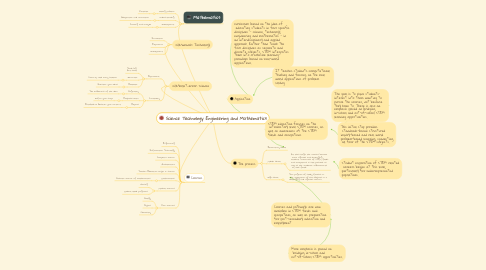
1. Science
1.1. Experiment
1.1.1. Think big Act small
1.1.2. Generate
1.1.2.1. Come up with many solution
1.1.3. Evaluate
1.1.3.1. Question your ideas
1.2. Creativity
1.2.1. Originality
1.2.1.1. The uniqueness of the idea
1.2.2. Emphasis Data
1.2.2.1. Define your scope
1.2.3. Expand
1.2.3.1. Establish & question your content
2. Technology
2.1. Innovation
2.2. Experience
2.3. Development
3. Mathematics
3.1. Solving problem
3.1.1. Realistic
3.2. Understanding
3.2.1. Adaptation and recreation
3.3. Development
3.3.1. Forming and analyze
4. Courses
4.1. Engineering
4.2. Information Technology
4.3. Computer Science
4.4. Architecture
4.5. Teacher Education major in science
4.6. Mathematics
4.6.1. Bachelor Science of mathematics
4.7. Medical Sciences
4.7.1. Nursing
4.7.2. Medical allied programs
4.8. Pure Sciences
4.8.1. Biology
4.8.2. Physics
4.8.3. Chemistry
5. Student exploration of STEM related careers begins at this level, particularly for underrepresented populations.
6. The goal is to pique students' interest into them wanting to pursue the courses, not because they have to. There is also an emphasis placed on bridging in-school and out-of-school STEM learning opportunities.
7. This initial step provides standards-based structured inquiry-based and real world problem-based learning, connecting all four of the STEM subjects.
8. STEM education focuses on the introductory level STEM courses, as well as awareness of the STEM fields and occupations
9. It teaches students computational thinking and focuses on the real world applications of problem solving
10. Application
11. The process
11.1. Elementary school
11.2. Middle school
11.2.1. At this stage, the courses become more rigorous and challenging. Student awareness of STEM fields and occupations is still pursued, as well as the academic requirements of such fields
11.3. High school
11.3.1. The program of study focuses on the application of the subjects in a challenging and rigorous manner.
